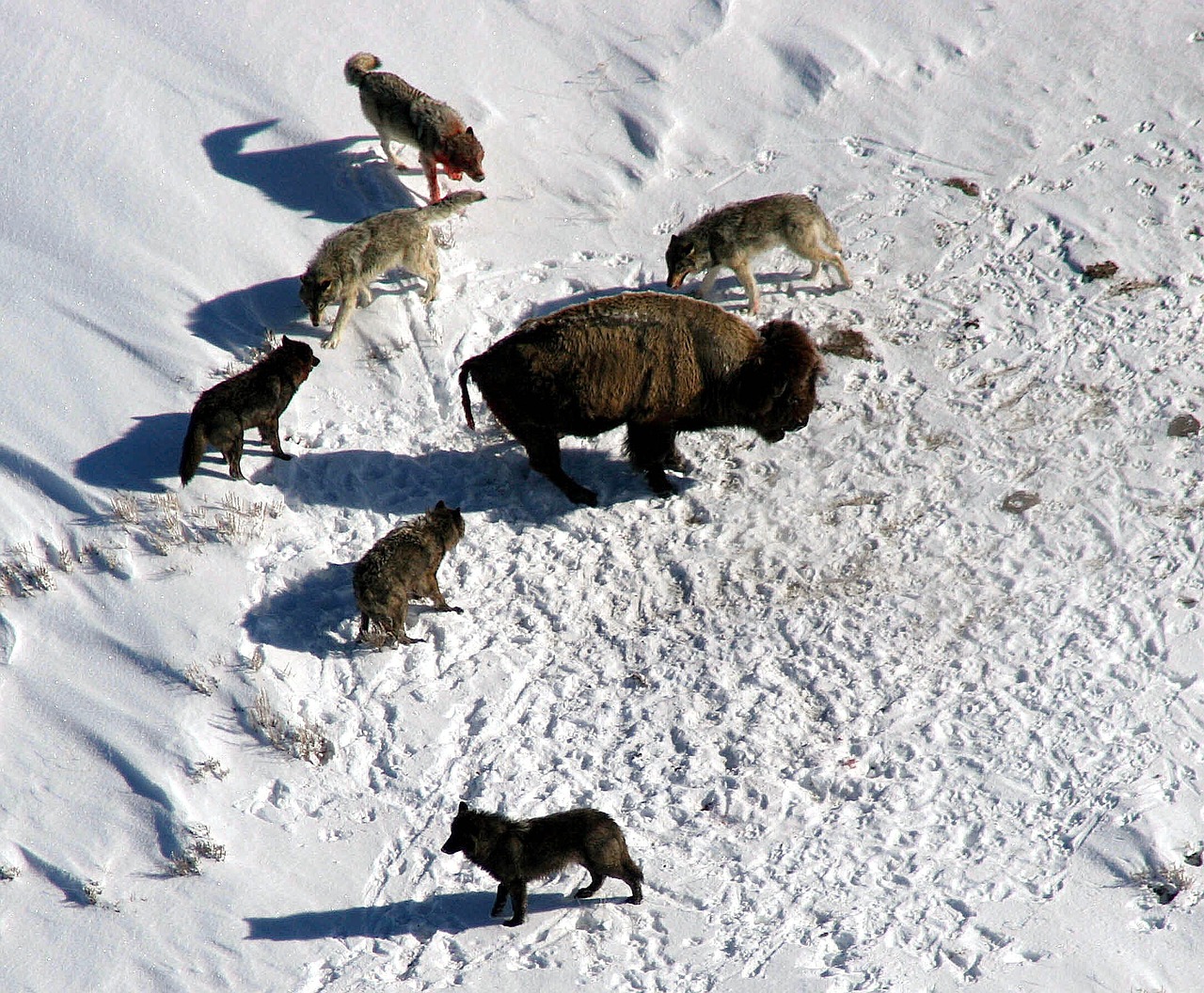In a world facing unprecedented environmental challenges, the role of outdoor enthusiasts in conservation efforts has never been more critical. These individuals, driven by their passion for the outdoors and their love of nature, are making a tangible difference in preserving our planet’s biodiversity and natural beauty. From restoring fragile ecosystems to advocating for sustainable practices, outdoor enthusiasts are emerging as powerful champions of conservation.
In this article, I delve into awe-inspiring conservation success stories, each a testament to the indomitable spirit of outdoor enthusiasts who are turning the tide of ecological decline. Their stories of redemption and resurgence not only inspire us but also impel us to action, for the wilderness they protect is our shared heritage, a legacy we must pass down intact to future generations. Join me on a journey through these remarkable tales of triumph and discover how outdoor enthusiasts are not just making a difference; they are the difference.
In this article, we’ll explore inspiring conservation success stories that highlight the remarkable impact of outdoor enthusiasts.
1. Restoring Vital Ecosystems: The Revival of the Yellowstone Wolf
Yellowstone National Park, located in the United States, is renowned for its stunning landscapes and diverse wildlife. However, by the mid-20th century, the park’s ecosystem faced a significant imbalance. The gray wolf, a keystone species, had been systematically eradicated from the region due to fears of predation on livestock.
In the 1990s, a group of passionate outdoor enthusiasts and conservationists launched a campaign to reintroduce gray wolves to Yellowstone. The process involved capturing wolves from Canada and releasing them into the park. This audacious endeavor faced opposition from some quarters, but the proponents persevered.
The results were astounding. The reintroduction of wolves triggered a cascade of positive ecological changes. Elk populations, which had exploded in the wolves’ absence, were controlled, allowing the recovery of vegetation. This, in turn, led to the return of other species, including beavers and songbirds. The entire ecosystem began to heal.
Today, Yellowstone serves as a living testament to the power of outdoor enthusiasts to restore vital ecosystems and bring balance back to nature.
2. Citizen Science and Marine Conservation: The Coral Restoration Movement
Coral reefs, often called the rainforests of the sea, are essential for marine biodiversity. However, they face numerous threats, including rising ocean temperatures, pollution, and destructive fishing practices. Conservationists and marine enthusiasts worldwide have taken up the cause of coral restoration.
One remarkable example is the Coral Restoration Foundation (CRF) in Florida, USA. Founded by Ken Nedimyer, an avid scuba diver and environmentalist, CRF engages citizen scientists and divers to restore coral reefs. They propagate and transplant corals that are resilient to changing conditions, helping reefs recover faster.
What started as a small project has grown into a global movement, with thousands of divers participating in coral restoration efforts worldwide. These outdoor enthusiasts-turned-conservationists are contributing to the preservation of underwater ecosystems and the protection of marine life.
3. Advocating for Public Lands: The Outdoor Industry’s Impact
The outdoor industry is a powerful force for conservation. Companies and individuals involved in outdoor activities have a vested interest in preserving natural spaces for their customers to enjoy. Over the years, they’ve become vocal advocates for public lands and conservation policies.
One example of this advocacy is the fight to protect the Arctic National Wildlife Refuge in Alaska. Outdoor industry leaders, including outdoor enthusiasts, have been actively involved in opposing oil and gas drilling in this pristine wilderness area. Their efforts helped prevent the destruction of a vital habitat for caribou, polar bears, and countless bird species.
Moreover, outdoor companies are increasingly committed to sustainability and environmental stewardship. From using eco-friendly materials in outdoor gear to supporting clean energy initiatives, these businesses are driving positive change and setting an example for others to follow.
4. Rewilding Projects: The Return of the European Bison
Rewilding projects aim to restore ecosystems by reintroducing species that have disappeared from their native habitats. These projects often rely on the support and enthusiasm of outdoor enthusiasts and conservationists.
One noteworthy example is the European bison, which faced near-extinction in the early 20th century. However, a dedicated group of conservationists and outdoor enthusiasts initiated efforts to bring these magnificent creatures back to their natural habitats.
In countries like Poland and Romania, where the European bison once roamed, rewilding projects have thrived. Enthusiastic individuals, including ecotourism operators and wildlife photographers, have played a significant role in raising awareness and funds for these initiatives. Today, the European bison population is slowly rebounding, and these majestic animals once again roam the landscapes of Europe.
5. Trail Maintenance and Preservation: Hiking Clubs Making a Difference
Hiking is a popular outdoor activity enjoyed by millions around the world. But with the increased foot traffic on trails comes the risk of environmental degradation. Hiking clubs and organizations are stepping up to ensure that these natural treasures remain accessible and pristine for generations to come.
One remarkable example is the Pacific Crest Trail Association (PCTA) in the United States. This organization, fueled by the dedication of outdoor enthusiasts and hikers, is committed to the maintenance and preservation of the Pacific Crest Trail, a 2,650-mile-long hiking route stretching from Mexico to Canada.
Volunteers from the PCTA invest thousands of hours each year in trail maintenance, erosion control, and habitat restoration. Their passion for the outdoors drives them to protect the fragile ecosystems along the trail and educate hikers about responsible outdoor practices.
6. Birdwatching and Conservation: Protecting Avian Diversity
Birdwatching is a beloved pastime for many outdoor enthusiasts, and it has the potential to contribute significantly to conservation efforts. Birdwatchers often become citizen scientists, collecting valuable data about avian populations and their habitats.
One striking example of this is the conservation of the Kakapo, a critically endangered parrot native to New Zealand. In the 1970s, the Kakapo population dwindled to just 50 individuals. A passionate group of birdwatchers and conservationists rallied to save this species from extinction.
Through intensive monitoring, habitat restoration, and a successful breeding program, the Kakapo population has slowly increased. Today, birdwatchers continue to play a crucial role in monitoring these parrots and their habitats, ensuring their survival.
7. Youth Engagement: Inspiring the Next Generation of Conservationists
Engaging young people in outdoor activities not only fosters a love for nature but also encourages them to become active conservationists. Youth organizations and outdoor enthusiasts are working together to inspire the next generation of conservation leaders.
One remarkable initiative is the National Park Service’s Youth Conservation Corps (YCC) in the United States. The YCC provides young people with opportunities to work on conservation projects in national parks. These experiences not only introduce them to the wonders of the outdoors but also instill a sense of responsibility for preserving these precious places.
Outdoor enthusiasts, including parents and mentors, are essential in guiding and supporting young conservationists. By sharing their passion and knowledge, they help ensure that future generations are committed to protecting our planet’s natural heritage.
Conclusion
Conservation success stories like these illustrate the profound impact that outdoor enthusiasts can have on preserving the environment. Whether it’s restoring ecosystems, advocating for public lands, or engaging in citizen science, outdoor enthusiasts are demonstrating their commitment to the well-being of our planet.
Their passion, dedication, and love for the outdoors drive them to make a difference. Through their collective efforts, they not only protect and restore ecosystems but also inspire others to join the cause. As we face increasing environmental challenges, the role of outdoor enthusiasts in conservation has never been more critical. Together, they are proving that our love for nature can be a powerful force for positive change, ensuring that future generations can continue to enjoy the wonders of the great outdoors.










